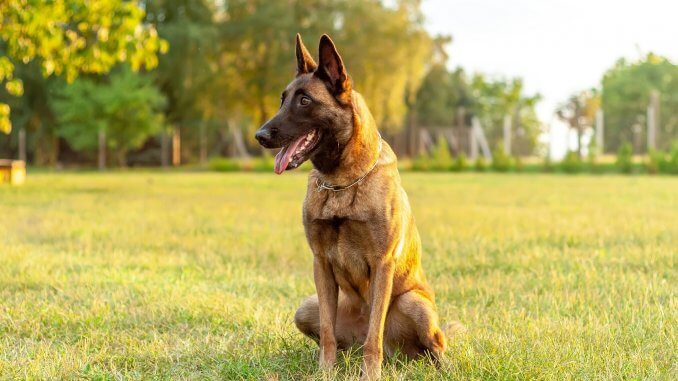Belgian Malinois Traits & Characteristics
As a dog enthusiast and advisor on large breed dogs, I’ve always had a soft spot for the Belgian Malinois. It’s one of the most versatile breeds out there, with a fascinating history, striking appearance, and exceptional qualities that make them unique among canine companions.
Introduction to Belgian Malinois
The Belgian Malinois, often simply called “Mal” for short, is a breed recognized for its strength, intelligence, and versatility. Having a Malinois in your life is like adding an extra turbo to your engine—it’s a ride of pure, exhilarating energy.
The Origins of Belgian Malinois
Early History
Our journey begins in Belgium, where the breed takes its name. In the late 19th century, Belgian sheepherders needed a dog that was robust, loyal, and hard-working. And thus, the Belgian Malinois came into existence.
Modern History
Fast forward to today, Mals are used worldwide in police and military roles, search and rescue missions, and as top competitors in obedience and agility trials.
Physical Characteristics
Size and Weight
Adult Mals are medium to large-sized dogs. Males usually stand 24 to 26 inches tall at the shoulder, and females a slightly shorter 22 to 24 inches. They weigh between 60 to 80 pounds.
Coat and Colors
Mals have a short, thick coat that comes in various shades of rich fawn to mahogany.
Eyes and Ears
The almond-shaped eyes display a rainbow of emotions while their large ears, standing erect, are constantly on alert.
Behavioral Traits
High Energy Levels
Mals are high-energy dogs. Their shepherd ancestry means they’ve been bred to work, and work hard.
Protective Nature
These dogs are fiercely loyal and protective of their family and territory. They will not hesitate to stand their ground against intruders.
Intelligence
Mals are incredibly intelligent. They are quick learners and are eager to please their human companions, making training a breeze.
Training Belgian Malinois
Early Socialization
Start socializing them as pups. Introduce them to different people, places, and situations to ensure they grow into well-rounded dogs.
Obedience Training
Regular obedience training from a young age is essential. They’re quick learners and will pick up commands easily.
Advanced Training Techniques
For a more fulfilling life, engage them in advanced training sessions like agility training, herding events, tracking, and obedience trials.
Health and Lifespan
Common Health Problems
Mals are generally healthy dogs. However, like all breeds, they can be prone to certain health conditions such as hip dysplasia, elbow dysplasia, and progressive retinal atrophy.
Lifespan
With a healthy diet and regular exercise, a Mal can live up to 14-16 years.
Healthy Diet
A balanced diet of high-quality dog food is necessary. It’s best to consult your vet for specific dietary advice.
Caring for a Belgian Malinois
Exercise Needs
Mals need regular and strenuous exercise. They enjoy long walks, runs, and playtime.
Grooming
Their short coat is easy to groom, but they shed twice a year and need regular brushing.
Mental Stimulation
They are intelligent dogs and need regular mental stimulation. Puzzle toys, training sessions, and games can keep them engaged.
Belgian Malinois and Families
Good with Kids?
Mals can be great with kids when properly socialized and trained. However, their high energy can sometimes be overwhelming for small children.
Good with Other Pets?
They can get along with other pets if they are raised together. However, their strong prey drive may not suit homes with small pets.
When Belgian Malinois are the Right Choice
Suitable Owners
Mals suit active individuals or families who can provide plenty of exercise and mental stimulation.
Not Suitable for
They are not recommended for first-time dog owners or individuals who cannot dedicate the necessary time for their exercise and training.
Adopting a Belgian Malinois
Where to Adopt
There are several breed-specific rescues where you can adopt a Mal. Always choose reputable breeders if you’re buying a puppy.
What to Look for
Look for signs of good health, such as clear eyes, clean ears, and a glossy coat. Ask for health clearances and ensure the pup is socialized.
Conclusion
The Belgian Malinois is a remarkable breed, filled with energy, intelligence, and loyalty. They make excellent companions for the right owners. As an advisor, I cannot stress enough that potential owners should understand the breed and their needs thoroughly before bringing a Malinois into their lives.
FAQs
1. How often should I exercise my Belgian Malinois?
As high-energy working dogs, Belgian Malinois require a substantial amount of exercise to stay healthy and happy. This breed thrives on regular, daily physical activities. Ideally, a Malinois should have at least an hour to two hours of intense exercise each day. This could involve long walks, hikes, runs, or play sessions with toys. They also benefit greatly from structured activities such as obedience, agility, or herding trials.
2. What kind of training is best for a Belgian Malinois?
Belgian Malinois are incredibly intelligent and trainable. They respond well to a variety of training methods. However, the best training is one that stimulates them both physically and mentally. Regular obedience training is essential, but they also excel at more advanced training sessions like agility training, herding events, tracking, and obedience trials. Positive reinforcement training techniques, where good behavior is rewarded, are particularly effective with this breed. Early socialization and exposure to a variety of environments, situations, and people are also crucial.
3. Is the Belgian Malinois a good choice for first-time dog owners?
While Belgian Malinois are wonderful pets, they may not be the best choice for first-time dog owners. This breed is high-energy and requires a significant amount of time, effort, and understanding. Their intelligence and drive to work mean they need ample mental and physical stimulation, more than a novice owner might be prepared to handle. They’re better suited to someone with experience in handling and training high-energy breeds.
4. How long does a Belgian Malinois live?
On average, a healthy Belgian Malinois can live between 14 to 16 years. Of course, this depends on various factors including diet, exercise, and veterinary care. Regular check-ups and preventative care can help ensure a long, healthy life for a Malinois.
5. Are Belgian Malinois good with other pets?
Belgian Malinois can get along with other pets, especially if they’ve been raised together. However, it’s important to note that they have a high prey drive and might not be suitable for homes with small animals like cats or rabbits. Early socialization and training can help them learn to behave appropriately around other animals. Always supervise interactions until you’re confident that all pets can get along well.




